Advantages & Benefits Of Flossing
What are the advantages & benefits of flossing? Can you imagine a world without flossing? It would be like living in a place with no sidewalks, where the only thing keeping your teeth from coming into contact with foods and plaque is some type of suction. The reality is that most people don’t take the time to floss their teeth regularly. While this may not seem like such a big deal at first, it can lead to problems down the road. For example, gum disease has been linked to an increased risk for heart disease and stroke while tooth decay may cause cavities or even pain while chewing on certain foods. Regular flossing will help keep these risks at bay!
There are all sorts of things in our lives that we know we should be doing every day to achieve optimal health, and yet we don’t find a way to do them. Exercise, healthy eating, journaling, meditation…there is no shortage of daily “tasks” that we often fall short of achieving. Flossing often fits right into that description. Most of us find a way to brush our teeth twice a day, but how many of us floss according to our dentist’s recommendation? The number is far lower than it should be. However, lecturing never helps with these matters, we need to focus on the “why” of flossing and the benefits of this daily practice.
Benefits of Flossing
There are many benefits & advantages of flossing your teeth. Some of these benefits include preventing cavities, reducing plaque buildup, and freshening breath. If you have any questions or would like more information about the importance of flossing, please contact us. We want to make sure that you know all the facts before making a decision on whether or not to start this healthy practice for yourself!
One of the first things dentists notice when they meet new patients is if they do or don’t use dental floss regularly. It’s important for everyone to take care of their oral health by brushing twice per day with fluoride toothpaste and also using dental floss daily as it can help prevent gum disease and cavities among other
Prevent Gum Disease
First benefit of flossing is to prevent gum disease.
Flossing is the number one defense against gum disease and fights off it’s precursor, Gingivitis.
Gingivitis is an inflammation of the gums, which can lead to tooth loss and other health issues. Gingivitis causes your gum tissue to become swollen and sore. You may also experience bleeding around your teeth or in between your teeth. These symptoms are often associated with age, but they can be caused by certain conditions such as diabetes, smoking, stress or pregnancy. The best way to prevent this condition is through good oral hygiene practices like brushing twice a day with fluoride toothpaste and flossing daily. If you have any signs that you could have gingivitis visit a dentist immediately for treatment before it worsens!
Flossing regularly reduces the chance of developing gingivitis a great deal, and that’s important because Gingivitis is one of the most common diseases in North America, with over 1 out of 8 people in the United States alone having the condition.
The Best Way To Prevent Gingivitis And Other Oral Diseases Is With Good Hygiene Practices!
Prevent Plaque
Second benefit of flossing is to prevent plaque.
Plaque is a sticky substance that can form on teeth, which causes tooth decay and gum disease. It starts out as bacteria that sticks to the surface of your teeth. Plaque constantly forms on your teeth because it’s constantly being created by bacteria in your mouth. When plaque stays there for too long, minerals from saliva will start to stick to it. Over time, this can lead to cavities or gum disease if left untreated. There are many ways you can prevent plaque from forming though! For example, brushing after every meal is an easy way to help reduce the amount of plaque accumulating on your teeth. You should also use dental floss regularly since it helps remove debris between the teeth where toothbrush bristles are unable to reach easily.
Prevent Tooth Decay
Third benefit of flossing is to prevent tooth decay.
The number one cause of tooth decay is bacteria that lives in your mouth. The bacteria eats the sugar on food and then excretes acid which damages teeth. We often brush our teeth after we eat to remove the leftover food and plaque, but it’s important to also rinse with water so the acid doesn’t stay on our teeth for too long. It’s best to brush at least twice a day with fluoride toothpaste and floss daily.
Basics of Flossing
Flossing is the act of using a thin thread to clean between your teeth and gums. It can be done by hand or with an electric toothbrush, which also helps remove plaque from hard-to-reach places. Flossing daily removes food particles, bacteria, and plaque that can accumulate in these areas over time. The American Dental Association recommends flossing at least once per day for two minutes or brushing your teeth three times per day for two minutes each time to maintain healthy oral hygiene habits.
How do you floss your teeth step by step:
Step 1:
Take a length of floss approximately the length of your fingertip to your elbow and wrap it around both of your middle fingers, leaving about 4 inches of space between your fingers.

Step 2:
Place your index fingers on the thread and slide the floss between your teeth.

Use the floss to scrape the sides of your teeth, wrapping it in a “C” shape around the base of the
tooth and under the gumline. Scrape the tooth 2-3 times from the base to the tip.
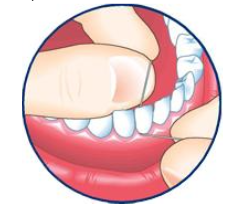
Be sure to floss BOTH sides of each tooth, and yes, that includes the molars at the very back of
your mouth. Move to another section of the floss as it begins to wear and pick up particles.
After, throw the thread into the garbage.
Follow up your flossing by brushing your teeth — it is more effective than brushing before you
floss.

Bleeding
For many people, flossing is a daily chore. It can be an uncomfortable and sometimes painful process because the average person has about 100 teeth to clean between their gums and the spaces in between. However, it’s important that everyone continues to do so at least once a day for reasons such as preventing gum disease. If you find yourself bleeding while or after flossing, don’t panic and immediately stop doing this! There are some steps you can take to help prevent any injury or pain from happening again when cleaning your mouth with dental floss. Keep reading for more information on how to avoid bleeding while flossing!
Flossing can lead to bleeding, and It is normal for gums to bleed a bit when you first start flossing. This is because the act of flossing causes your gums to swell and pull away from the teeth, which in turn exposes more gum tissue. While this may be a little unpleasant for some, it is worth knowing how to avoid bleeding while flossing so you can keep your mouth healthy! In order to avoid this issue, you should use waxed dental tape instead of traditional dental thread as it does not tug on your gums as much.
In addition, try using a water pick or irrigator to remove plaque buildup underneath the gum line before attempting to floss.
Types of Floss
- Unwaxed floss is made of approximately 35 fine strands twisted into a single, thinstrand. It fits into tightly-spaced teeth but is more prone to shredding.
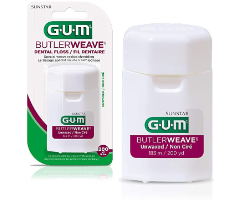
- Waxed floss is the standard floss you think of. It is less likely to shred, but it is harder toget into tight spaces.
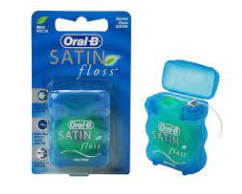
- Polytetrafluorethylene (PTFE) floss is made of the same high-tech material as Gore-Tex clothing. It easily slides between teeth and is less likely to shred
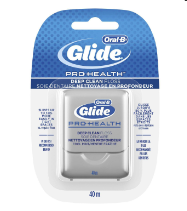
- Dental tape is wider and flatter than your standard floss and can be waxed or unwaxed.It is typically more comfortable for those who have more space between their teeth.
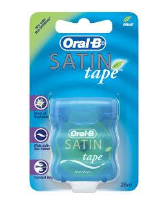
- Super floss is made from a yarn-like material with stiffer sections on each end that canbe used to thread through braces, wires, or bridges
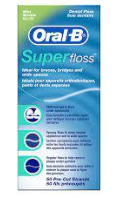
- Floss holder is typically used by children who are beginning to learn how to floss orthose with limited dexterity, but it is not as effective as a thread of floss
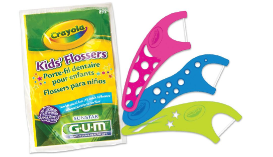
- Interdental picks have tiny soft bristles made of synthetic materials such as nylon orrubber. These picks are typically used to get into bigger gaps between the teeth but likefloss holders, are not as effective as thread floss.



